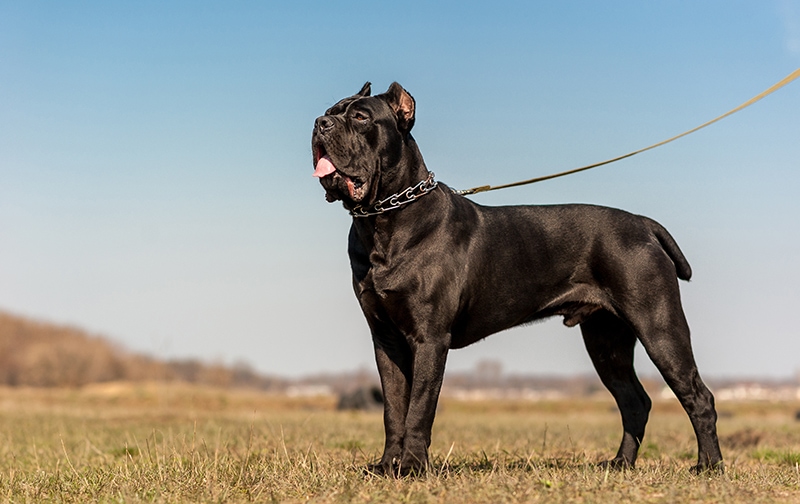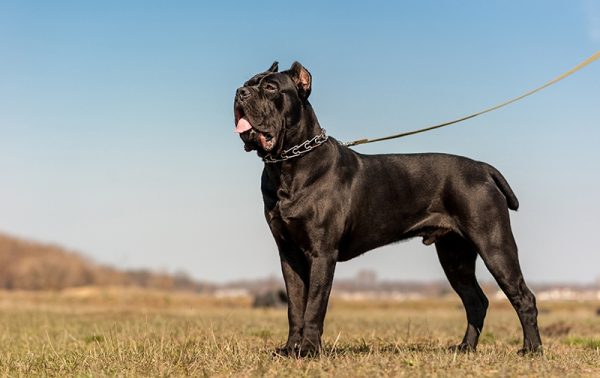Big, heavy, and capable of getting work done, these marvelous dogs are the perfect guardians. The imposing stature, intelligent eyes, and loyal character turn Cane Corsos and Bandogs into canine royalty. However, despite the similarities, they are NOT the same breed. More than that, Bandogs aren’t recognized as a breed by the American Kennel Club.
Why are these dogs often mistaken for one another, then? How do they compare? Do Cane Corsos have the same visual, physical, and mental traits as Bandogges? More importantly, what sets these dogs apart? You’ll find all the answers in our expert guide, including the average lifespan, common health issues, and tips for keeping your pet safe. Let’s set the record straight!

How Do They Compare Visually? Which Dog Is Bigger?
Cane Corsos are bigger-than-average dogs that weigh up to 110 pounds and reach 28 inches in height. However, they’re not as big as Bandogs. These guardians can weigh 140 pounds and be as tall as 30 inches. Both are hardworking, loyal, and highly protective canines with strong instincts. Corsos have cropped, pointy ears that make them stand out in the crowd.
Bandogs have smaller, upright ears. These dogs boast wider shoulders and stronger chests. Visually, they’re larger and leaner than Cane Corsos. So, while these guys do look alike to the naked eye, if you know your dogs, it won’t be hard to tell them apart. Bandogs are taller, heavier, and have a more aggressive, imposing look.
Are These Dogs the Same Breed or Not?
The short answer is no, they’re not. Bandogs aren’t classified as a breed because they are the “lovechild” of mastiffs, terriers, and other dogs (i.e. a crossbreed). Cane Corsos, in contrast, are officially recognized as a breed by AKC (back in 2010), KC, and other reputable kennel clubs. This Italian mastiff breed was brought to Europe by the Romans back in the second century BC after the Macedonian Wars1.
Bred to serve as war dogs, Cane Corsos were fearless and ready to head into the heat of the battle. Centuries later, people started to use these loyal dogs around farms to watch over the livestock and keep predators at bay. This breed took a heavy hit during WWI and WWII (it almost went extinct) but was revived in the 70s.
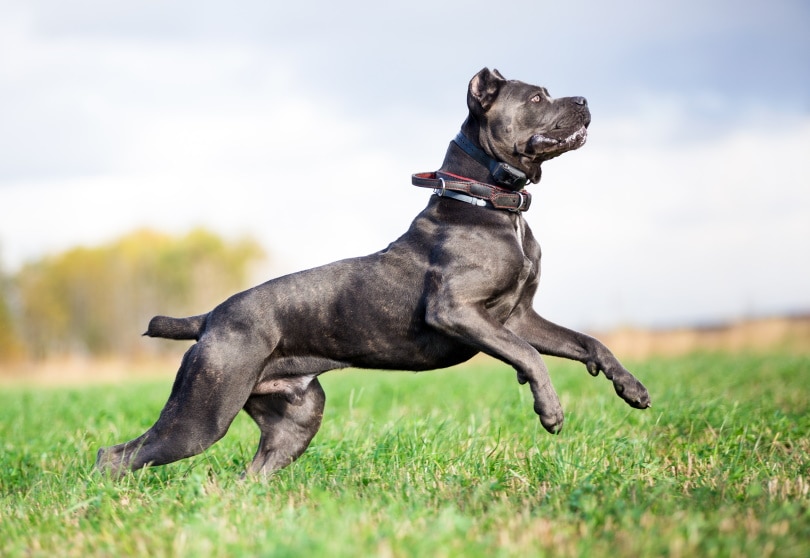
How Do You Recognize a Bandog?
Essentially, any big, strong, fighting dog that looks like a Terrier and a Mastiff can be called a Bandog. They are quite aggressive (hence the chain), territorial, and loyal to their human masters, which is exactly why Bandogs have always been great hunters and guardians.
And sadly, even though it’s illegal, these mighty hounds are still being bred for dogfighting. This is important: today, in many EU countries, owners are required to keep a Bandog on a leash; otherwise, they’ll be fined. So, check the local laws to stay out of trouble! Here’s a quick look at the breeds that are generally recognized as Bandogs:
- Mastiffs
- German Boxers
- Bulldogs
- Rottweiler
- Pit Bulls
- Terriers
Training Cane Corsos vs Bandogs
Energetic and active, Cane Corsos are big fans of the outdoors but can be happy indoors as well, as long as there’s enough space to run around. And, despite the scary looks, these dogs are very friendly and like to do fun stuff with their favorite humans. Thanks to their muscular build, Cane Corsos can exercise for 1–2 hours a day. The same is true for Bandogs. But you need to keep an eye on them.
Some Bandogs run out of steam sooner; for them, a simple walk will suffice. Now, Cane Corsos are strong-willed yet sensitive. You’ll have to find the golden middle between carrots and sticks in training. Early socialization will help turn a Corso into a loyal dog. Bandogs, in turn, are headstrong: don’t be afraid to be a bit harsh in training. Again, socialization at a young age is highly recommended.
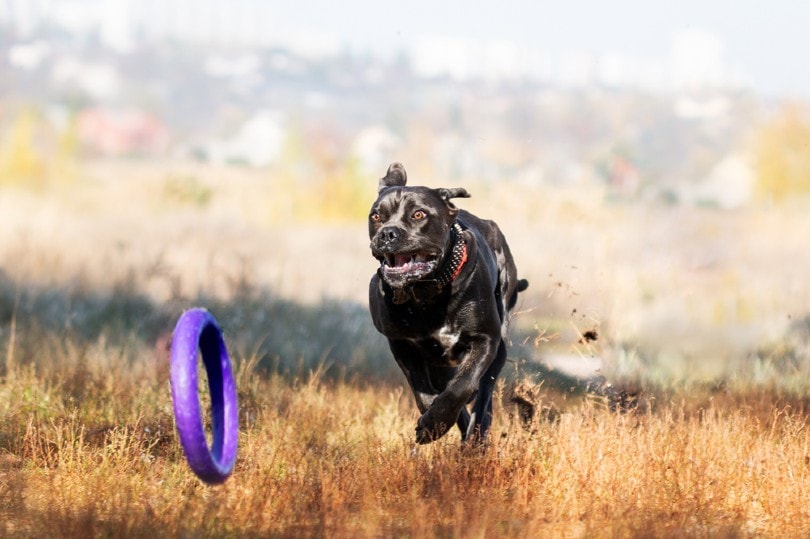
How Long Do These Dogs Live?
It’s no secret that smaller dogs live longer than larger, heavier breeds. We’re talking about an extra year or two. And in that regard, Corsos and Bandogs have a very decent lifespan: 8–12 years. To put things into perspective, the average life expectancy for all dog breeds is 10–13 years2; bulldogs only last for 8–10 years. Now, what can you do to help your favorite pet live longer?
Regular visits to a licensed veterinary clinic (at least twice a year), vaccinations, and premium-quality food will go a long way. Don’t skip wellness exams and always consult with a vet regarding what your dog should eat and how long it should exercise: that’s the best way to keep your four-legged bud healthy. Knowing about health issues is also important. We’ll cover that next.
Common Health Problems: Signs and Treatments
Bred to be strong, hardworking, and resistant to harsh weather conditions, these “war dogs” are quite healthy. They’re naturally immune to many diseases and conditions, thanks to their bulky, heavy-boned, and muscled bodies. That said, there are still a few issues that you need to be aware of, including bloat, dysplasia, and obesity. Here’s a more detailed look.
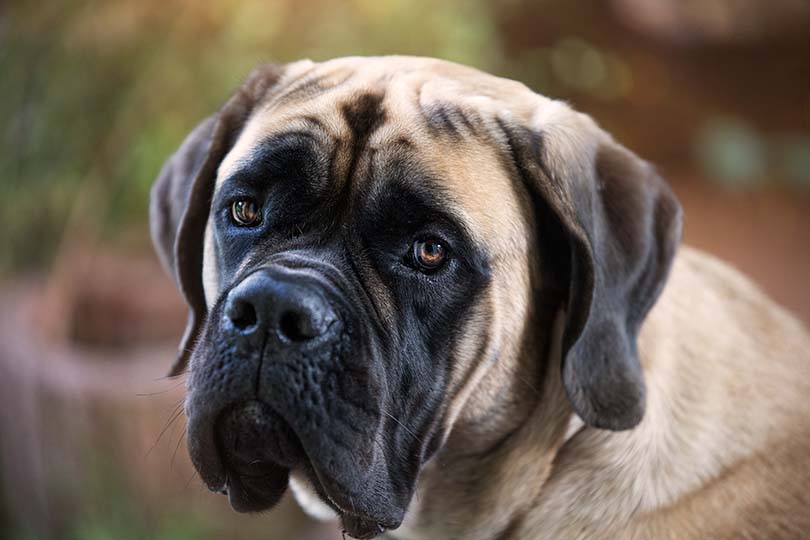
Gastric Dilatation-Volvulus
As big, heavy dogs with large chests, both Cane Corsos and Bandogs often suffer from gastric dilatation-volvulus, commonly known as bloat. When the stomach is filled with more food, liquids, and gas than it can handle, that makes it bloat, enlarge, and twist. This is a life-threatening condition that requires your immediate attention. The sooner you get the dog to a vet, the easier it will be to cure it!
So, what’s the main cause of bloat? It’s when the dog consumes too much food in a very short time. The age matters as well (older dogs are in a high-risk group). One more thing: don’t train or exercise with the dog right after it had a meal. Give its stomach time to digest the meal. And here are the most common signs of GDV:
- Retching (dry-heave)
- Anxiety and pacing
- Constant panting
- Massive drooling
- Elevated heartbeat
- Paler-than-usual gums
- Collapse/fainting
- The dog is looking at its stomach
- The pet assumes the down dog pose
Obesity
Again, larger-than-average dogs are susceptible to obesity. It puts unnecessary stress on the body, which, in turn, can damage the hind limbs and cause other issues. The solution here is relatively simple. Exercise with the dog regularly and talk with your veterinarian to come up with the right diet for your pet. This is equally true for Corsos and Bandogges.
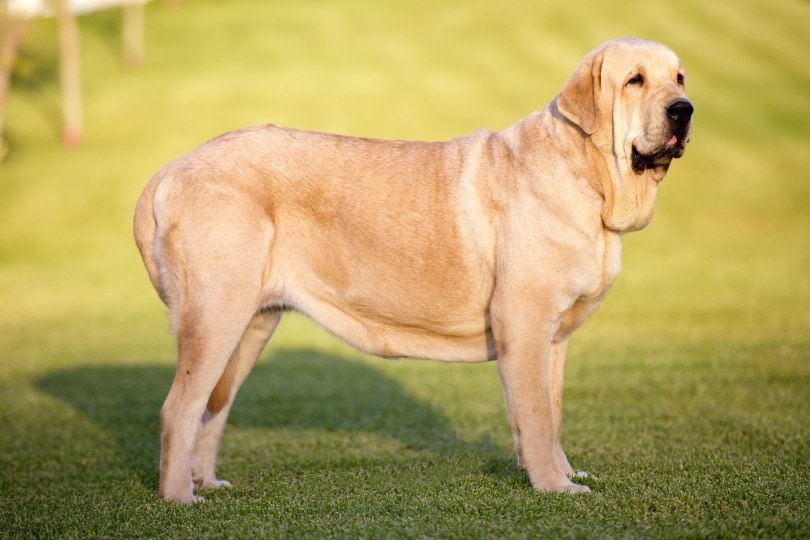
Hip Dysplasia
The heavier the breed, the more likely it is to suffer from joint-related problems. Limited physical capabilities, limping, and pain are the most common side effects of hip dysplasia. To protect your doggo from this disease, work on losing its weight. Also, consider reducing the physical activity and maybe even buying medication (vet-approved) or putting the dog through surgery.
Epilepsy and Skin Conditions
Cane Corsos suffers from idiopathic epilepsy that “kicks in” out of nowhere. There’s no permanent cure, but medication does help control this condition. And what about demodectic mange? It’s a skin condition (mostly genetic) that leads to scaly, dark skin, extensive hair loss, and itching. Sometimes, it goes away after a month or two. If not, treat it with oral/topical medication.
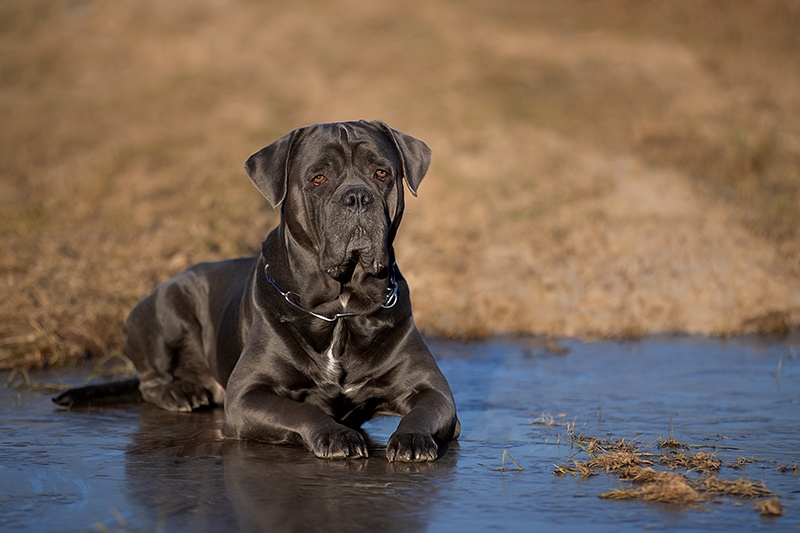
Eyelid Abnormalities
Like many mastiff breeds, Cane Corsos often develop various eyelid-related abnormalities. The list includes entropion, ectropion, distichiasis, and glandular hypertrophy. All these disorders can make the dog’s life a lot harder and less enjoyable. In most cases, surgery is the only solution here.
Keeping Your Pet Healthy: A Quick Guide
Both Cane Corsos and Bandogs have short coats that shed evenly throughout the year. That means you’ll only have to bathe and brush the dog once a month. For the best results, use medium bristle brushes. As for the teeth, brush them once a week—that’s enough to keep them healthy. Trim the nails when they get long enough for comfort and clean the ears.
And let’s not forget about drooling! Corsos and Bandogs do that a lot. So, always keep a towel or rag in your pocket to deal with the drooling. If you’re a Bandog owner, make a habit of cleaning the wrinkles on its face regularly. Otherwise, you’ll end up with oil and dirt buildup that’s much harder to remove.
Conclusion
Very few dogs are as strong, intelligent, and hardworking as Cane Corsos and Bandogs. If you’re in the market for a loyal watchdog to look after your property, you’ll be impressed by how well these hounds perform their duties. From afar, they look very much alike, but there are quite a lot of differences between them. Bandogs are much bigger yet harder to control.
They have a more independent, free-willed personality, which means you’ll have to put in more effort to train them. Cane Corsos, in turn, are more adaptive and well-suited for the indoors. Both dogs will be a challenge for a first-time owner, though. But, when properly trained, they will turn into intelligent, capable guard dogs!
Featured Image Credit: Dioniya, Shutterstock
Contents
- How Do They Compare Visually? Which Dog Is Bigger?
- Are These Dogs the Same Breed or Not?
- How Do You Recognize a Bandog?
- Training Cane Corsos vs Bandogs
- How Long Do These Dogs Live?
- Common Health Problems: Signs and Treatments
- Gastric Dilatation-Volvulus
- Obesity
- Hip Dysplasia
- Epilepsy and Skin Conditions
- Eyelid Abnormalities
- Keeping Your Pet Healthy: A Quick Guide
- Conclusion

